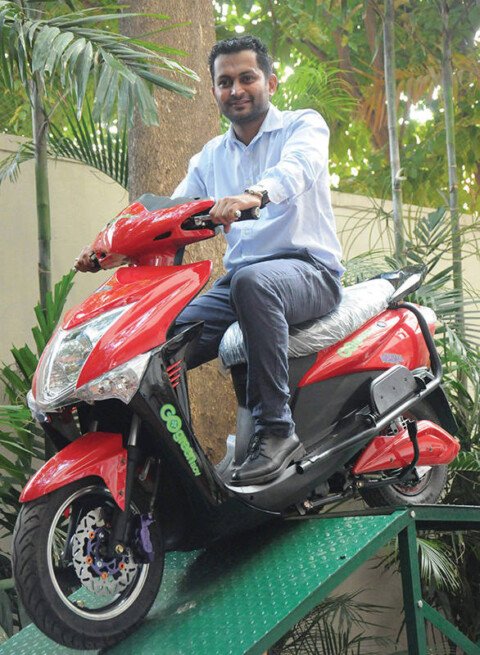With the highly efficient strategies and plans and policies in place, SriLankan Airlines has successfully combatted with the challenges thrown upon by the Pandemic. From spurred technology adoption to converting passenger aircraft into ‘Preighters’ – the airline is all set to achieve growth in coming times. The carrier historically accounted for 10 per cent of the total air traffic revenue. The financial year 20/21 saw the cargo revenues increasing by 63 per cent from FY 19/20 to account for 60 per cent of the total air traffic revenue generated in FY 20/21, which is quite commendable.The Sri Lankan flag carrier’s Head of Cargo Chamara Ranasinghe says that by capitalising on the cargo demand, the airline has been able to introduce new destinations to the SriLankan Airlines network including Frankfurt, Paris, Milan, Sydney, Nairobi, Incheon and Saigon as well as operating over 150 non-scheduled and cargo charter operations connecting the Far East, Africa, Indian Sub-continent, Europe and the Middle East in FY 20/21. Excerpts from his interview with Ritika Arora Bhola.
Despite the pandemic, SriLankan Airlines expanded its cargo operations and continued with the supply of essential commodities globally. How was the year 2020 for your cargo operations?
SriLankan Airlines was compelled to essentially ground the passenger fleet in March 2020 with the decline in passenger travel as an effect of the global pandemic. In supplementing the loss of passenger revenue, SriLankan Cargo took steps towards capitalising on the disrupted logistics environment through the operation of its first cargo dedicated operation in the same month, leading to the commencement of scheduled operations catering to the cargo demand to 21 destinations in May 2020.
The airline presently maintains scheduled operations to over 37 destinations. With a largely cargo focused operation, the airline faced challenges in terms of the unpredictable nature of the global trade levels and market uncertainties as well as in maintaining the cargo competitivity in relation to the larger scale carriers further aggravated through rising fuel prices towards the latter part of the year.
SriLankan Cargo historically accounted for 10 per cent of the total air traffic revenue. The financial year 20/21 saw the cargo revenues increasing by 63 per cent from FY 19/20 to account for 60 per cent of the total air traffic revenue generated in FY 20/21.
Tell us about your freighter operations globally in terms of destinations covered, cargo moved and capacity handled in this New Normal scenario.
SriLankan Cargo presently maintains a fleet of passenger aircraft amounting to 24 wide body and narrow body Airbus aircraft. Through capitalising on the cargo demand at hand, the carrier was able to introduce new destinations to the SriLankan Airlines network including Frankfurt, Paris, Milan, Sydney, Nairobi, Incheon and Saigon as well as operating over 150 non-scheduled and cargo charter operations connecting the Far East, Africa, Indian Sub-continent, Europe and the Middle East in FY 20/21.
How have relationships with your key customers changed in the new normal? How have you restructured your logistics network strategy to suit the way shippers approach carrier relationships?
SriLankan Cargo set up a division for handling cargo charters on its fleet of passenger aircraft, a segment the airline had previously not ventured to, in catering to the global demand for air freight solutions since April 2020. The airline achieved success over competitors largely in providing customised solutions in catering to specific customer needs. Relationship selling, provision of rapid solutions and consistency of operations proved to be the key factor in maintaining operations since the onset of the pandemic.
What is your assessment of the quality of infrastructure in Sri Lanka, especially related to the logistics? Are they set to support the carrier’s operations in the long run or do you feel there’s the need for more?
The cargo handling facilities at Bandaranaike International Airport comprise of two terminals maintaining an internationally certified ground handling operation with the capability to handle all commodities of cargo with a present annual handling capacity of over 270,000 metric tonnes.
SriLankan Airlines further intends to develop dedicated handling facilities with segregated areas for handling general cargo, perishables and courier cargo and is presently in the process of obtaining a new state-of the-art terminal for import cargo by 2023.
The Government of Sri Lanka is presently enhancing the available facilities in the country’s second airport, Mattala Rajapaksa International Airport, to develop it as a key air transportation hub in the region.
How is SriLankan Airlines taking advantage of the increasing trade volumes arising out of India? Specifically, where you tapping into for successful customer marketing programs and lead business growth?
India represents a present key market for SriLankan Airlines for the uplift of garment raw materials, healthcare and pharmaceuticals, e-commerce, personal electronic devices, perishables, live animals and the varying quantity of general cargo to and from the Far East, Middle East, Africa and Europe.
In order to capture the market potential from India, SriLankan Airlines aims to maximise operations to and from key markets such as Mumbai, Chennai, Bangalore, Delhi and Hyderabad. Representation in these markets in connectivity to Far East, Middle East, Africa and Europe will be essential to capitalising on the market opportunities.
How is SriLankan Airlines digitalising its logistics and supply chain processes? Take us through the latest technology for efficient and resilient operations.
SriLankan Airlines is presently pursuing the IATA e-AWB initiative in line with the industry requirements for digitisation. The current e-AWB penetration is 75 per cent in Sri Lanka and SriLankan Cargo is targeting for 100 per cent by end of the year (2021) in line with the CAA – Civil Aviation Authority compliance. The airline is presently in the process of providing required training for the converting manual AWB customers to the e-AWB model in meeting the objective.
Further, SriLankan Cargo integrates all imports and exports customs data in Sri Lanka with the Acycuda system maintained by the Sri Lanka Customs Authority, thereby eradicating the requirement for physical documentation for submitting Manifests and AWBs as of June 2021.
To improve the ease of the customer, an online payment portal was developed for customer settlement of cargo related charges where they were previously required to physically process payments at the cargo terminal at the airport.
SriLankan Cargo mobile app providing customers with real-time information on shipments was further developed during this period to include available facilities and prior calculation of applicable charges.
How is the airline handling pressure during these times of emergency? Conversely, what do you see as the biggest untapped opportunities?
COVID-19 has challenged airlines to adjust their strategies and strive to find new actions to adapt to what seems to be a new era of travel. With a higher concern for safety and health, some passenger segments may appear to be obsolete to invest on while some will be high return segments. Also, we see that airlines who communicate and maintain the trust and brand promise tend to create their strategies stronger than carriers which are combating by imposing restrictions. Cost rationalisation is a crucial part in today’s context as well.
We will leverage on both cargo and passenger flight operations and will be evaluating the planned network expansions. However, the cargo operation will take the center stage until the passenger restrictions subside in most of our key markets. Nevertheless, the services to our industry stakeholders, corporates and loyalty members will continue while all our passengers segments will be kept informed and updated on the travel possibilities and operations. In addition, we are exploring the feasibility to operate to offline destinations and on connecting points via CMB to provide enhanced travel options to passengers and charter flight options.
Key emphasis will be made upon the airline’s digital transformation. In the COVID-19 era, technology plays a key role along the customer journey as it helps to re-evaluate not just customer service but the company’s value portfolios. This digitalisation process will also assist travelers by providing them with more flexibility and confidence when trips are cancelled or rebooked due to COVID-19. Contactless technology, Artificial Intelligence (AI), and/or 5G are some of the technological adaptations we are looking at that will help the Airline to navigate through the challenging future.
With the largest COVID-19 vaccination drive underway, how is the airline gearing up to successfully distribute vaccines around the globe that too in huge quantities?
SriLankan Cargo presently prioritises the uplift of COVID-19 vaccine consignments and medical supplies in support of the Sri Lankan Health Sector’s efforts, uplifting the largest share of vaccines consignments into Sri Lanka to date, in mitigating the spread and negative effects of the pandemic on the economy.
The airline further allocates priority for the uplift of medical supplies to and from India, Korea and Africa and Middle East through the present scheduled and charter operations for items such as PPE, ventilators, oxygen cylinders and syringes.
Lastly, would you like to reveal about any expansion plans or potential projects in pipeline? SriLankan Airlines aims to expand the cargo vertical through the incorporation of first freighter aircraft by March FY 21/22 in capitalising on the global and base market cargo demand.







